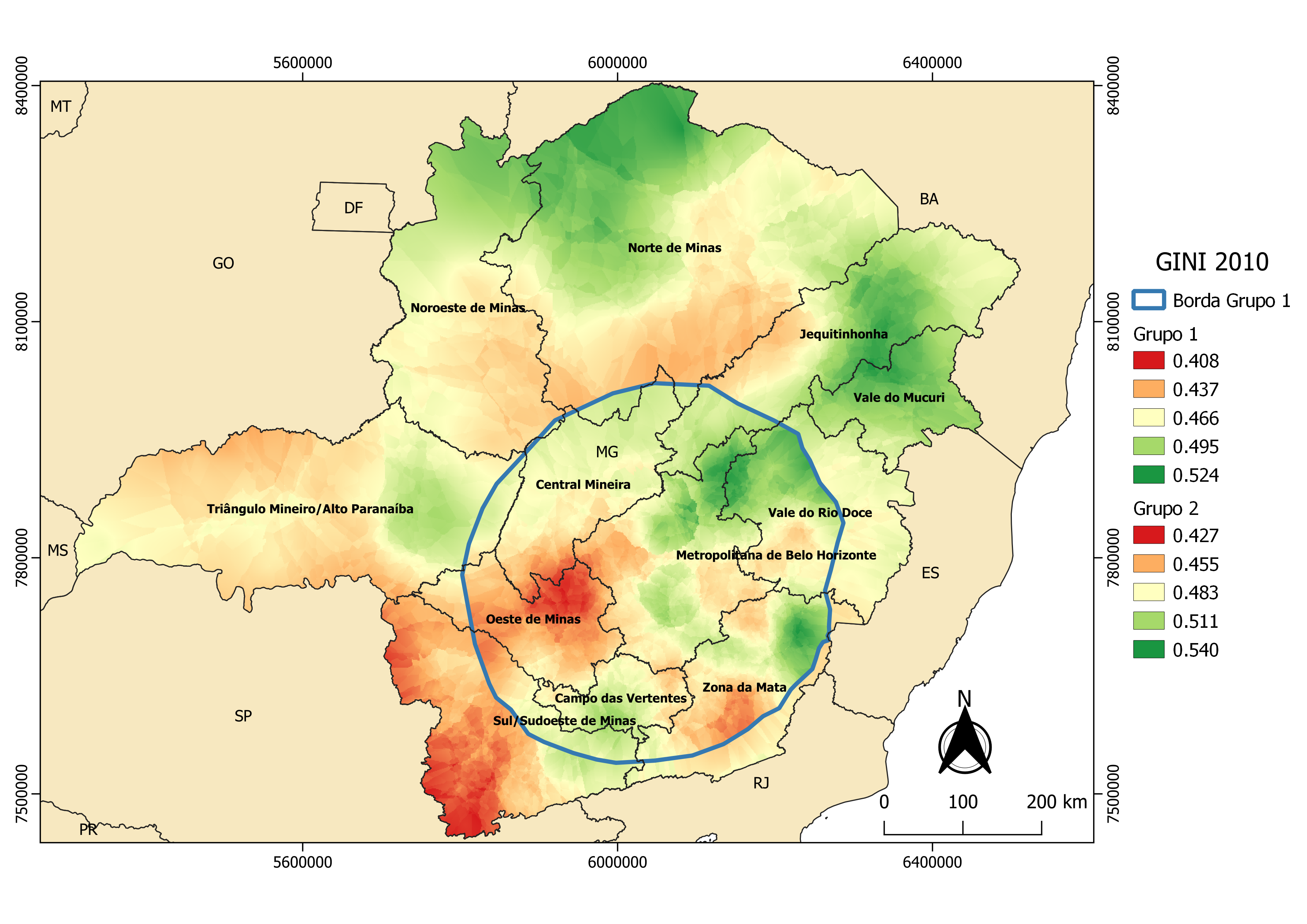Comparative study of Minas Gerais GINI index between the years 1990 to 2010 through Ordinary Kriging and Split Kriging
Keywords:
GINI Index, Ordinary Kriging, Split Kriging, Product Partition ModelAbstract
The GINI index is a measure of inequality widely used to verify the income distribution of a region, it indicates the difference in income from the poorest to the richest, and varies numerically between values from 0 to 1, where the highest value indicates large concentration of income. Performing the analysis of this index in the State of Minas Gerais, using data from Atlas IBGE from 1991 to 2010, it was possible to build maps of Ordinary Kriging and Split Kriging using the Spatial Product Partition Model (SPPM). With the Split Kriging, a division in the sampling grid of the state was obtained, which showed the separation of the central region, the most economically developed in the state, in the 3 analysed periods, and the fluctuation of the GINI indices over the periods in the other regions. We conclude that there was a gradual increase in the GINI index in practically most of the mesoregions of the North of Minas, and the West of Minas remained with the lowest index during all periods compared to the other regions.

Downloads
Published
How to Cite
Issue
Section
License
Proposta de Política para Periódicos de Acesso Livre
Autores que publicam nesta revista concordam com os seguintes termos:
- Autores mantém os direitos autorais e concedem à revista o direito de primeira publicação, com o trabalho simultaneamente licenciado sob a Licença Creative Commons Attribution que permite o compartilhamento do trabalho com reconhecimento da autoria e publicação inicial nesta revista.
- Autores têm autorização para assumir contratos adicionais separadamente, para distribuição não-exclusiva da versão do trabalho publicada nesta revista (ex.: publicar em repositório institucional ou como capítulo de livro), com reconhecimento de autoria e publicação inicial nesta revista.
- Autores têm permissão e são estimulados a publicar e distribuir seu trabalho online (ex.: em repositórios institucionais ou na sua página pessoal) a qualquer ponto antes ou durante o processo editorial, já que isso pode gerar alterações produtivas, bem como aumentar o impacto e a citação do trabalho publicado (Veja O Efeito do Acesso Livre).
